"Green" energy sources are gaining increasing popularity. We tell you that it is better to choose for a private house - solar panels or wind generators, and describe the nuances of their installation.
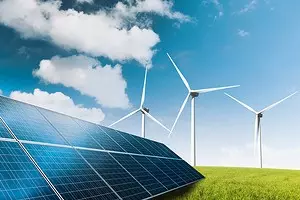
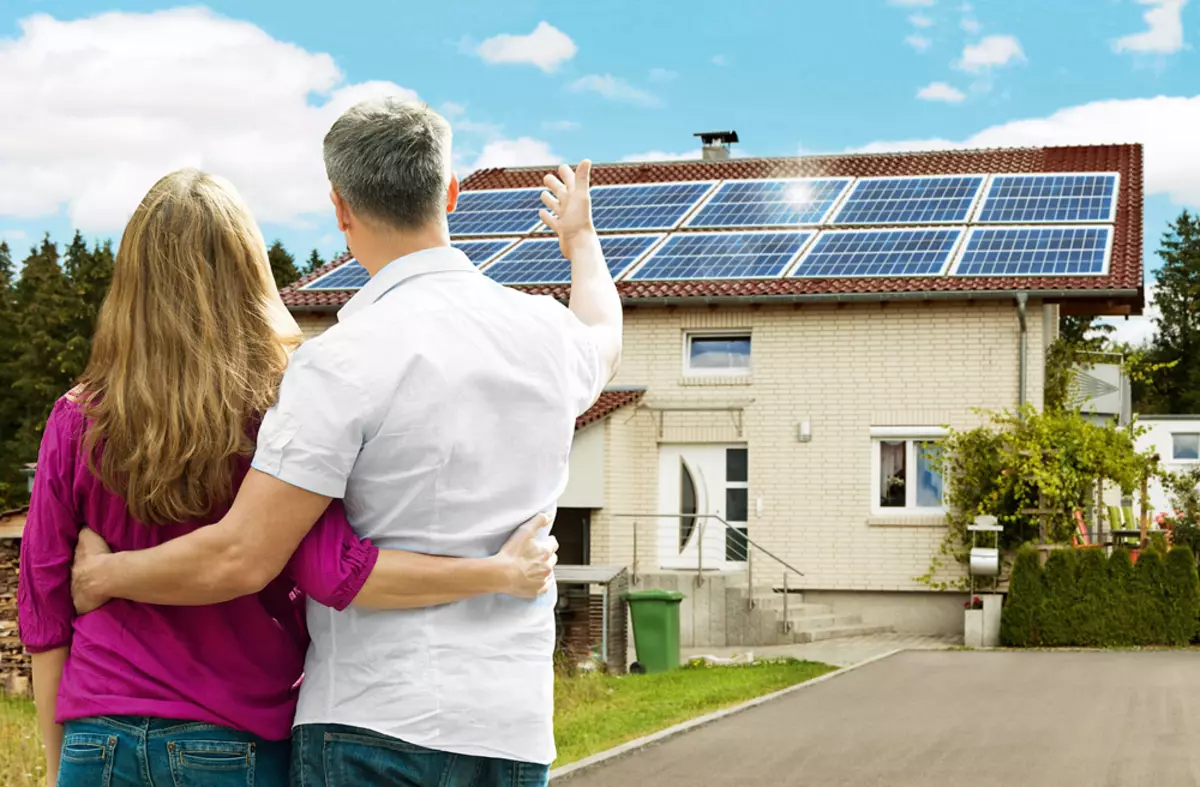
Photo: shutterstock / fotodom.ru
Solar panels and wind generators were the greatest distribution of alternative sources of electricity. Both technologies are well developed, equipment prices are gradually decreasing, and now, for example, a 200-250 W solar module can be purchased for 15-20 thousand rubles.
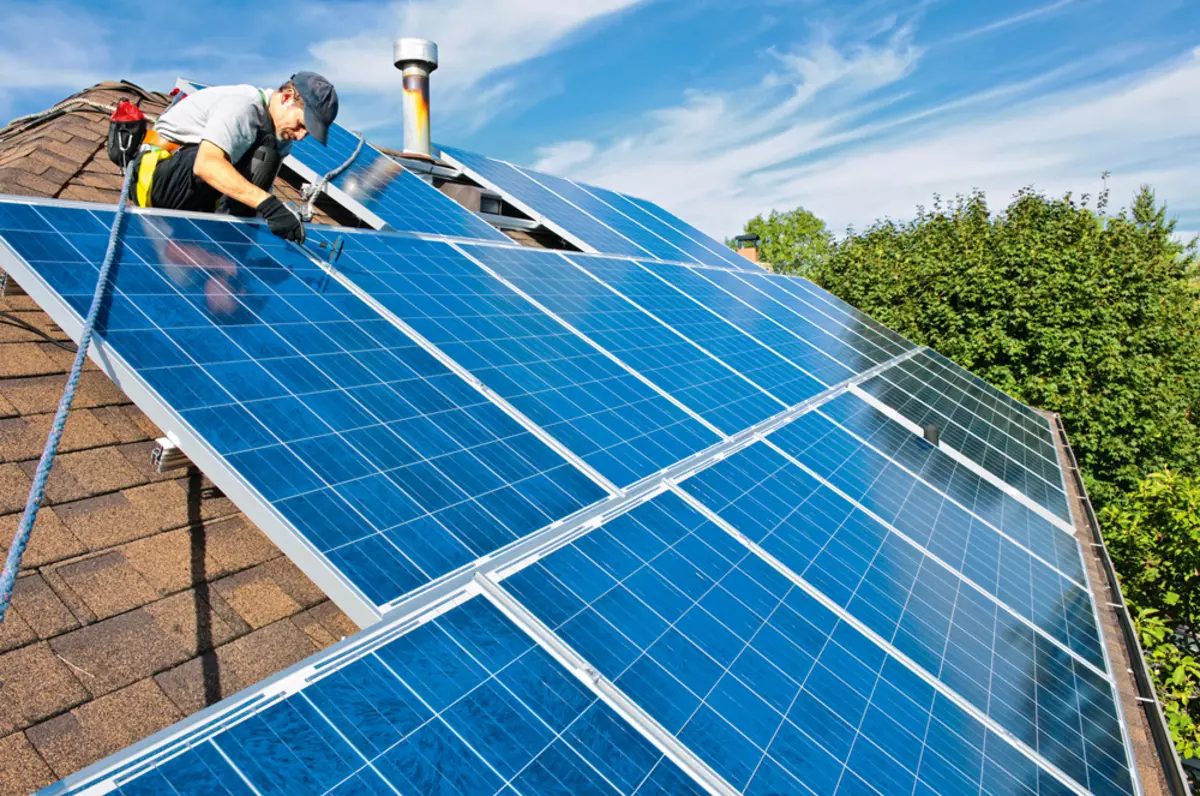
Photo: shutterstock / fotodom.ru
What kind of source choose?
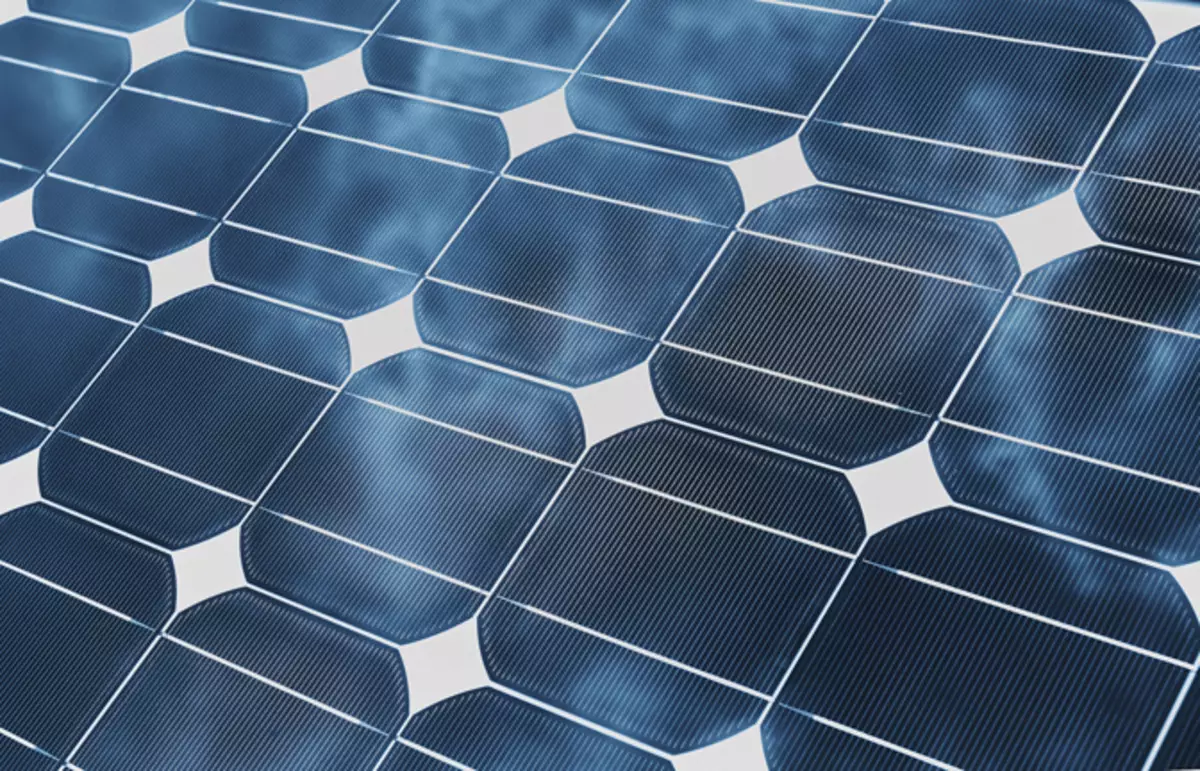
Different types of silicon solar panels. A variant with single-crystal modules (the plane of the module is made of solid silicon crystal). Photo: shutterstock / fotodom.ru
First, decide on the amount of electricity that you need. Are you going to build an energy supply system at home completely on solar or wind energy or use it as an emergency power supply system? After all, price tags are very different. For an emergency system (with an output power of 200-500 W), one to two solar modules and additional equipment is enough - only in order of 40-50 thousand rubles. But completely move to autonomous power supply will cost much more expensive. For example, a system on soy-input with a 2500 W output capacity will cost 300-400 thousand rubles. Similar order of numbers and in the price tags for wind generators.
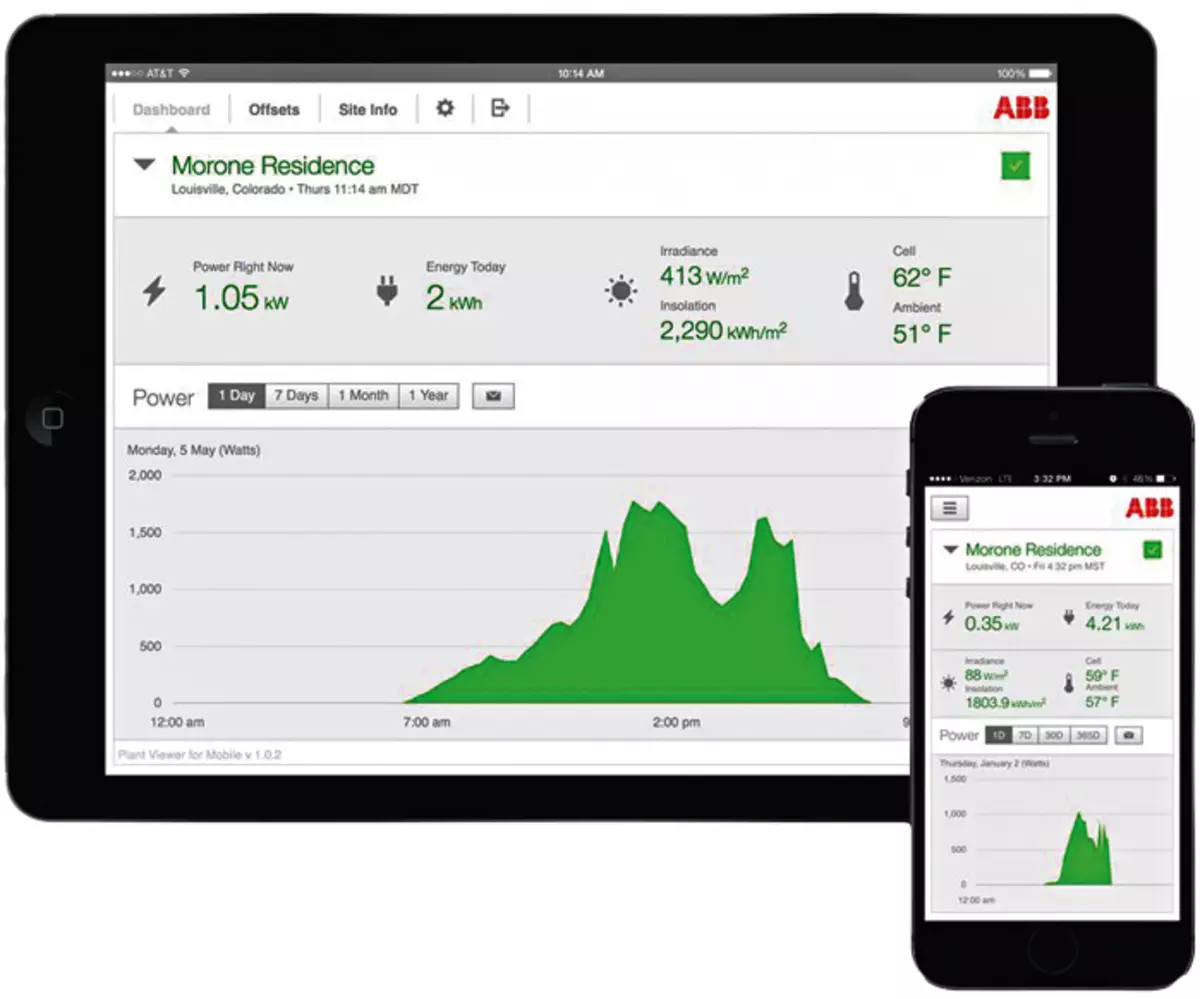
Solar controllers, inverters and modern rechargeable batteries under living space do not occupy a lot of space and do not require a separate room. Their service and operation can be made both locally and remotely, using a tablet or smartphone (via an Ethernet or Wi-Fi network). Photo: ABB.
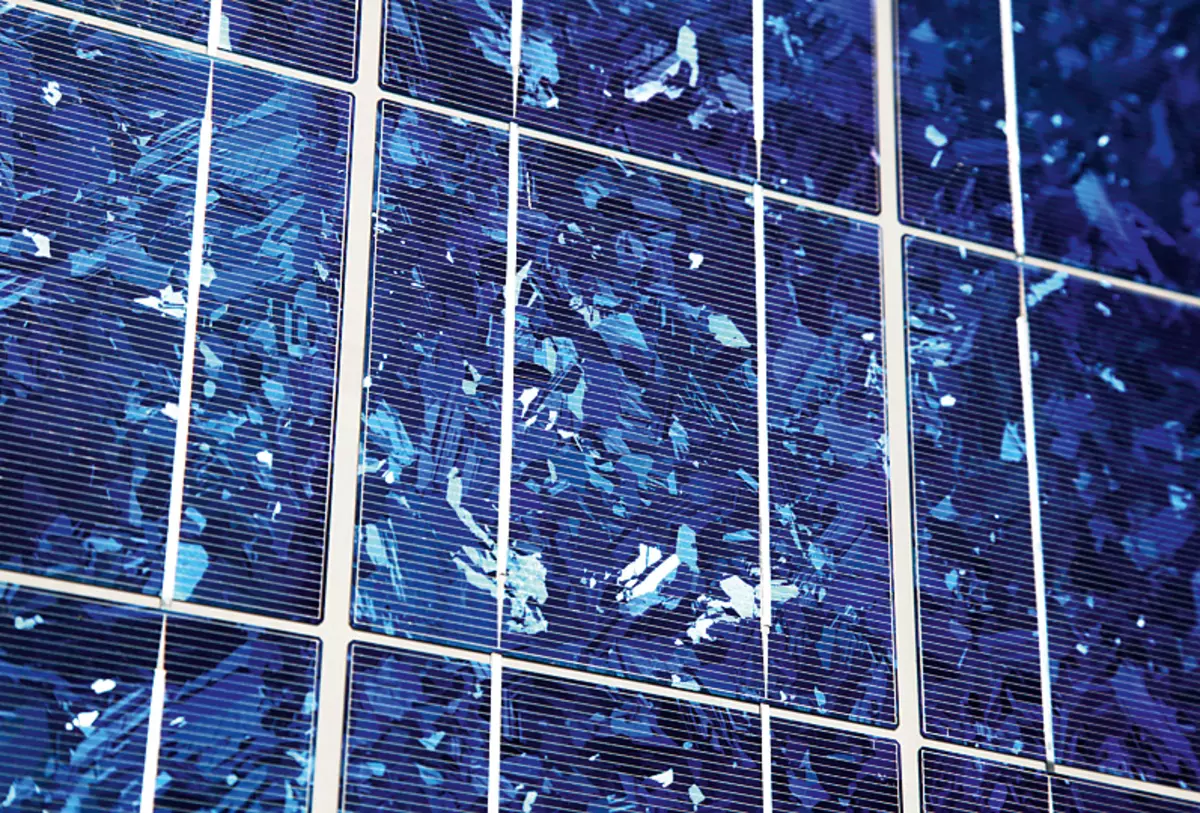
With polycrystalline modules (contains several crystals). Photo: shutterstock / fotodom.ru
Immediately choosing the type of "green" source depends on the climatic and geographical features of the area. Let's say, for low-speed areas with poor weather (for example, in the Crimea), solar batteries are best suited. In open areas, on the hills and the sea coast, which are characterized by prolonged strong winds, wind generators have proven well. For the most part of European Russia there is little places with a climate, ideally suitable for one or another type of electricity generators. In such conditions it makes sense to establish both types of generators who will substitute each other. Of course, such a system is much more expensive - but what to do, these are the features of the Russian climate.
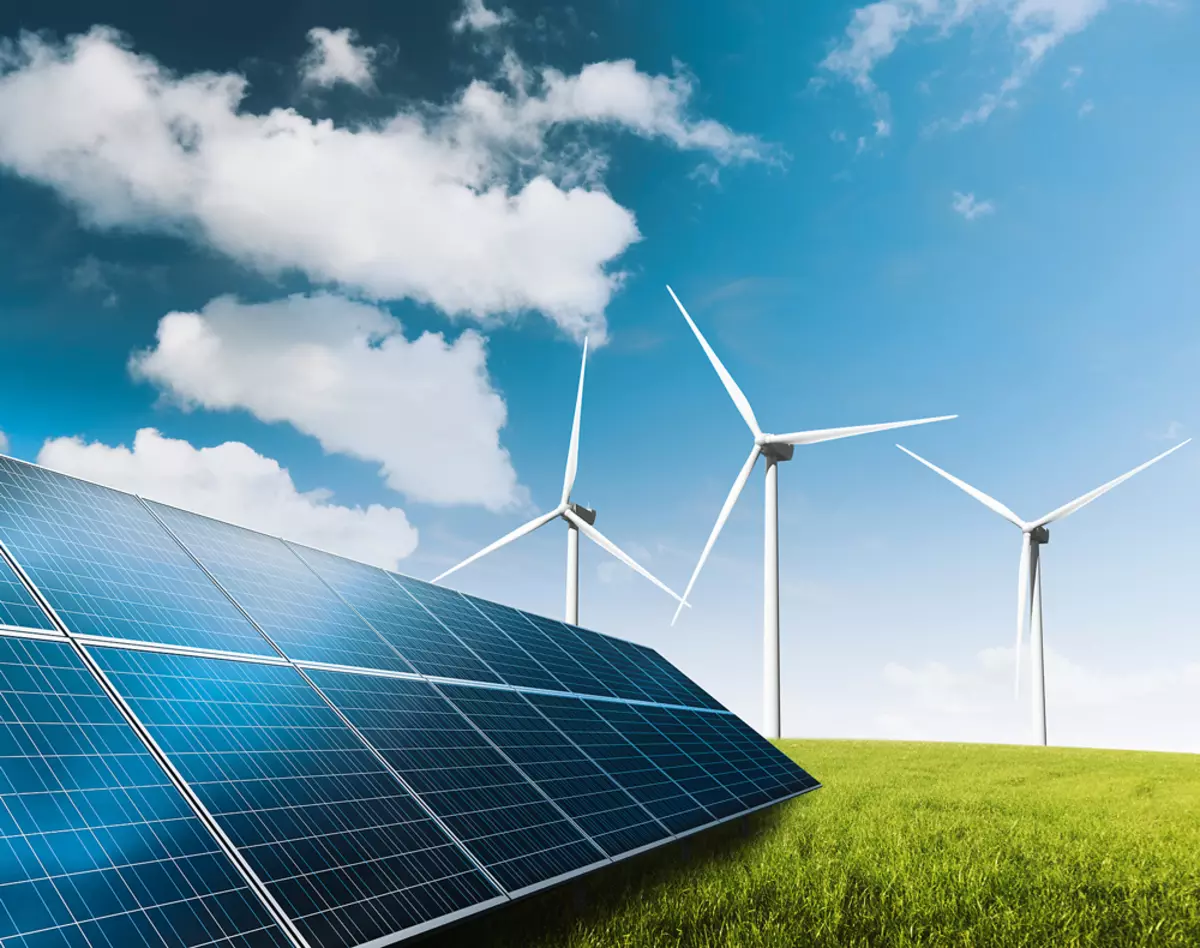
Photo: shutterstock / fotodom.ru
Solar panels
Currently, two types of these devices have been distributed: silicon and film. Each of them is divided into types:- Silicon monocrystalline. Each individual light-receiving module is made based on a silicon plate carved from a solid crystal. These batteries differ in the greatest efficiency (up to 22-24%), but also the highest cost;
- Silicon polycrystalline. The plate of the individual module has a structure consisting of several silicon crystals, due to which the device is needed roughly. Efficiency 13-15%;
- Silicon amorphous. At the cost of 20 percent below the polycrystalline, efficiency of approximately 6-8%;
- Film, based on cadmium televouride, cadmium selenide, polymeric materials, etc. They appeared recently and not gained widespread, but are considered by many manufacturers as very promising. The efficiency and cost is about 20% higher than that of amorphous.
Polycrystalline and based on amorphous silicon were obtained the greatest distribution. These modifications are easier in manufacturing and cheaper than a single crystal-based panel, and in addition, amorphous silicon-based batteries are not required direct irradiation with solar lights, they more effectively reproduce electricity with multiple lighting and, accordingly, better suitable for the middle strip of Russia, Where many cloud days. For regions with a predominance of clear weather (Crimea, Central Asia), on the contrary, it is better to use mono-and polycrystalline batteries.
Wind generators
The wind generator converts wind energy into electric. Modern models are capable of working with a small wind (2-3 m / s), although the optimal wind speed for their work is higher and is usually 10-12 m / s. At wind speed, 3 m / s such a wind generator will produce about 5% of the power from possible, at a speed of 7 m / s - about 50%. Therefore, when selecting the generator model, it is necessary to consider the average annual wind speed in your area, this indicator is always indicated in the description.
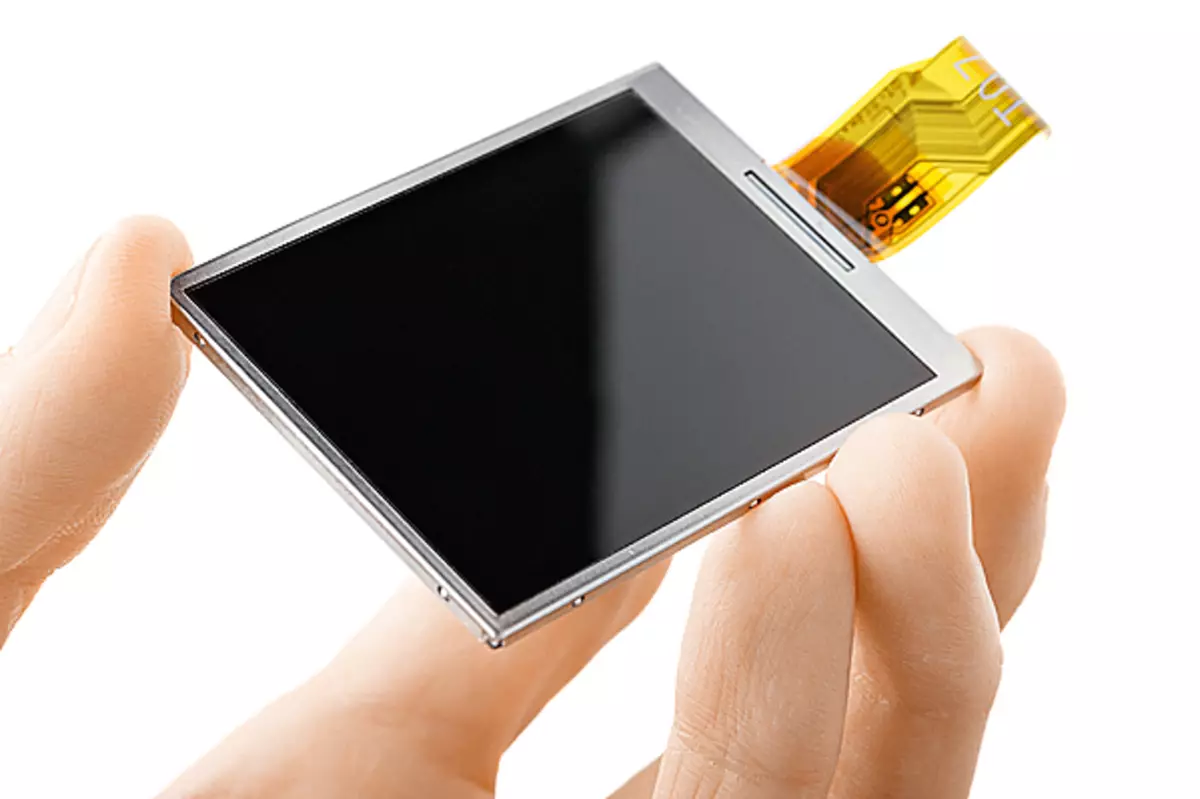
With amorphous modules. Photo: shutterstock / fotodom.ru
Select the wind generator and the magnitude of the monthly current generation. You must calculate how much electricity you need. Let's say you decide to be economical and limited to emergency lighting, the operation of the circulation pump and the possibility of charging a smartphone or laptop. Then you will need a current output power of 150-200 W, it is about 50-100 kWh per month. Such workings will provide a small power model, they can be purchased today for 20-30 thousand rubles. And if you need more energy, then the wind generator should be selected more powerful: models that produce several hundred kilowatt-hours for a month, but also the price of them will be higher - 100-150 thousand rubles.
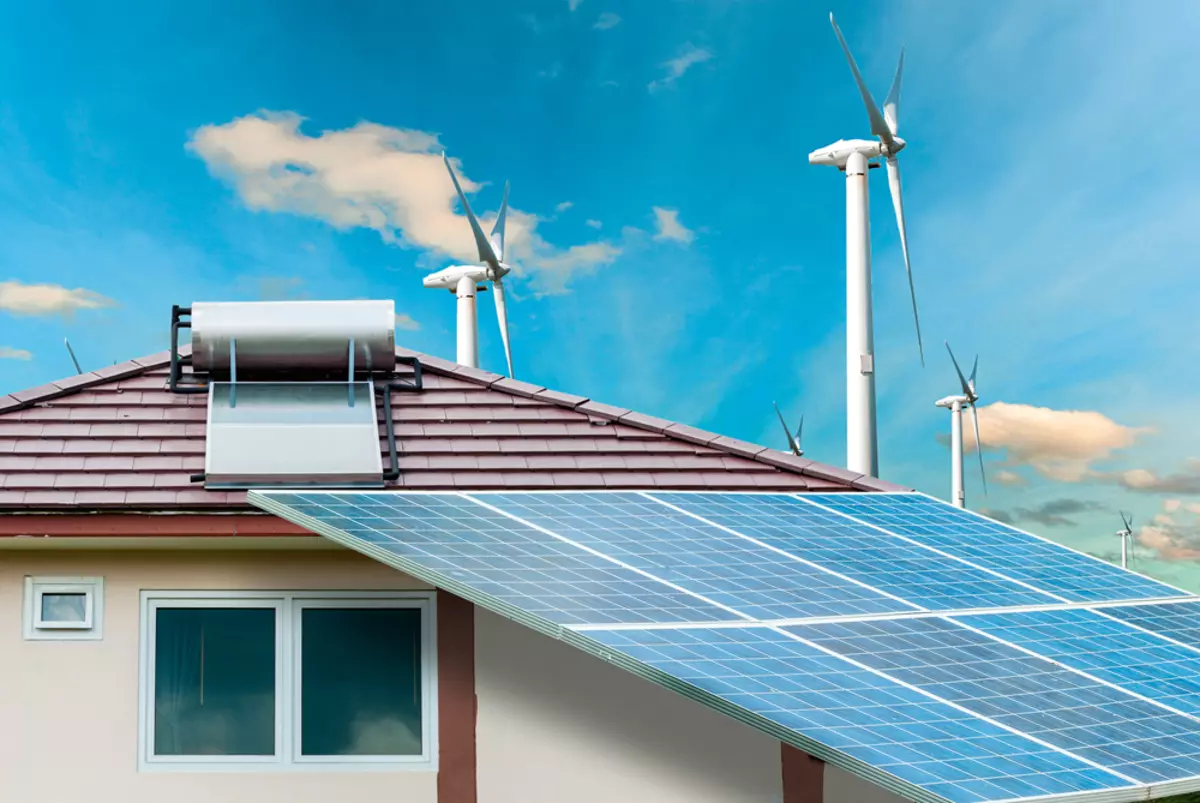
A comprehensive solution with solar batteries and powerful wind turbines designed for wind, changing in a wide range of speeds. Photo: shutterstock / fotodom.ru
Similarly, the calculation for solar batteries is also performed. The required amount of electricity is calculated, and the modules are selected on the basis of calculation so that their cumulative performance with the warranty ensure your needs. The calculation is becoming a little more complicated, since the value of the monthly current generation is strongly changing from the time of year. In the summer it is the maximum, and in the winter barely reaches 10-20% of the summer. Therefore, choose solar panels depending on whether they are going to use them only in the warm season (in the country season) or all year round. In addition, the efficiency of production strongly depends on how well you are located solar panels. If they were not turned out to be deployed in the right direction and at the right angle, then the efficiency of energy generation significantly decreases - by 20-30%, and even more. Therefore, it is better that the calculations on the required performance of batteries, taking into account the location of their location, did a specialist.
Approximate hybrid wind-solar installation scheme
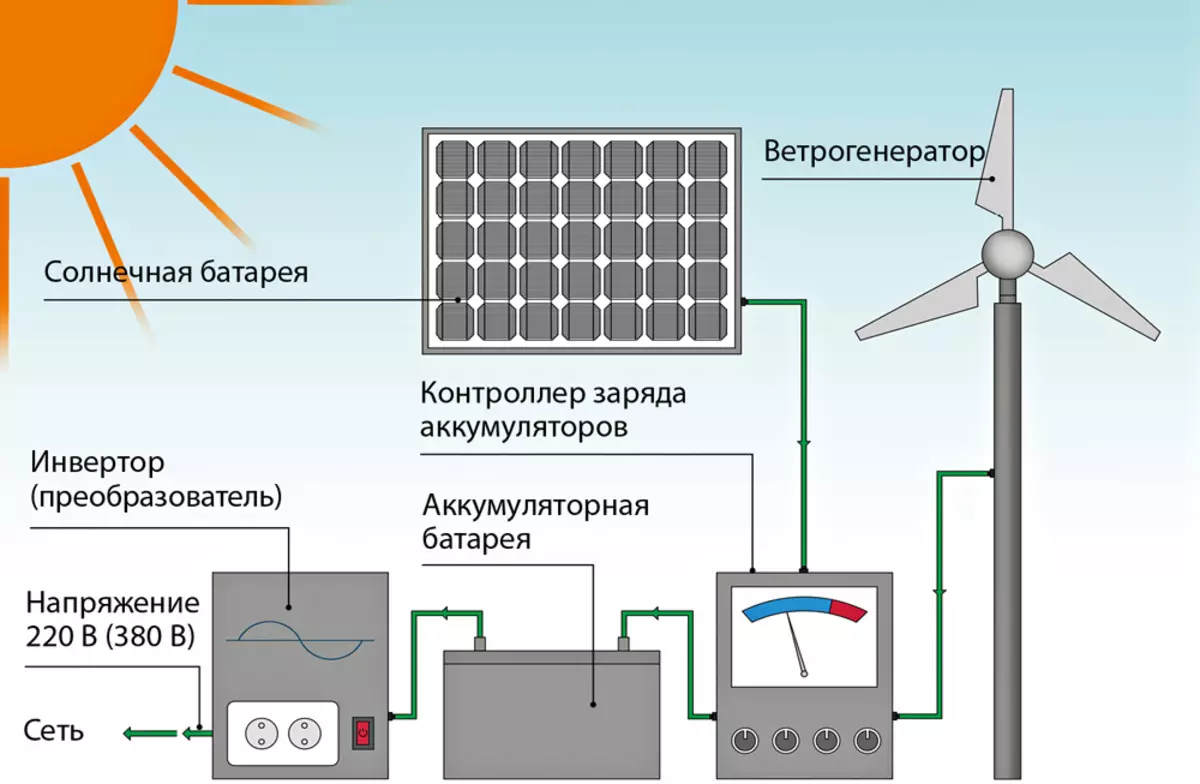
Visualization: Igor Smirhagin / Burda Media
Comparative advantages and disadvantages of solar silicon batteries
| Monocrystall | Polycrystall | Amorphous silicon | |
Cost | The tallest | Average | Lowest |
Performance, efficiency,% | ~ 22. | ~ 15. | ~ 10. |
Requirements for lighting | High: It is recommended to orient the battery so that the sun's rays fall on its plane perpendicular | High: It is recommended to orient the battery so that the sun's rays fall on its plane perpendicular | Less demanding of the corner of the fall of sunlight |
Efficiency of working in cloud weather | Low | Low | High |
Service life | ~ 25. | ~ 20. | ~ 15. |
Where and how to install batteries and wind generators
Solar panels should be located as far as possible so that the sunlight falls on them. In the northern hemisphere, solar panels are deployed in the southern direction, under the tilt corresponding to geographic latitude. In practice, solar panels are usually installed on the southern slope of the roof. If there is no such possibility, then the batteries are placed in a less favorable position, and adjustments should be added to the performance. It may be necessary to increase the number of modules.
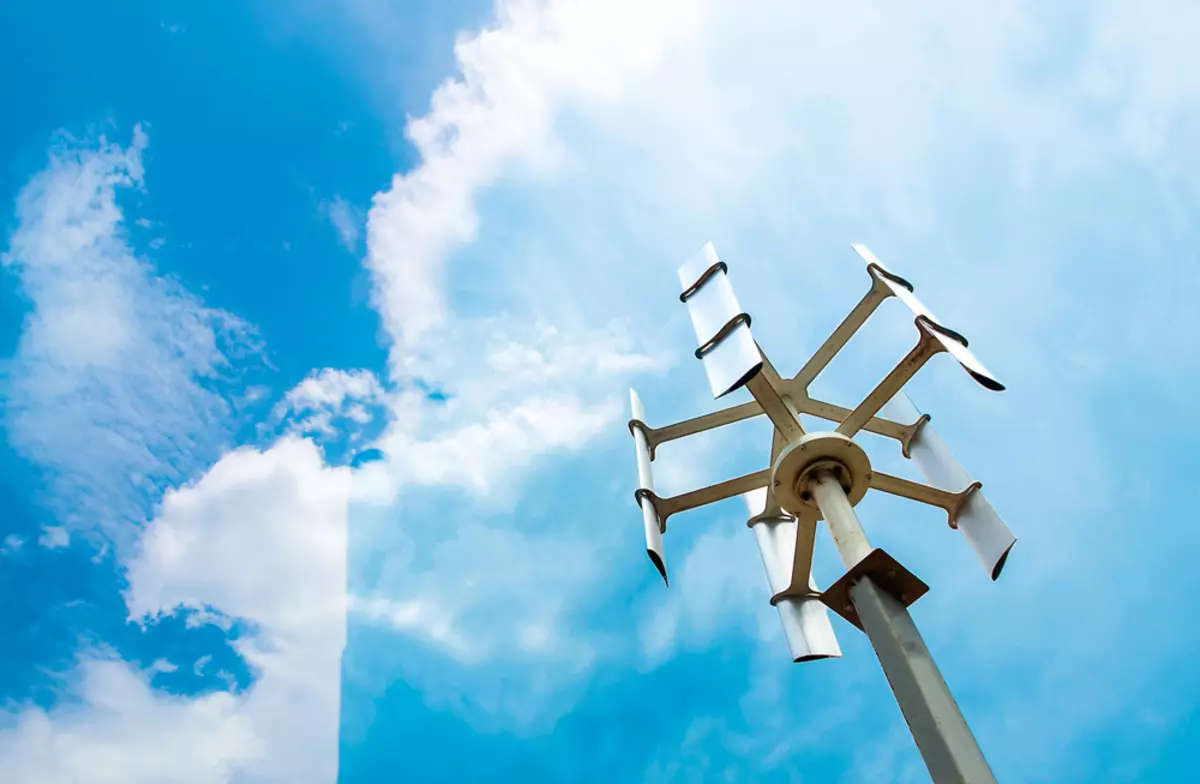
The wind generator with a vertical axis of rotation is characterized by low noise. Photo: shutterstock / fotodom.ru
Well, if you have a margin on the mounting area, where in the future you can install an additional one or more modules. Because sooner or later you will have the idea that it would be nice to increase system performance.
Solar panels need to be installed so that they can be serviced. This applies not only to repair work, but also cleaning - it must be done regularly, removing the fallen foliage with panels, dust and dirt. Particularly important is the availability of panels with year-round use due to the need for their cleaning from snow.
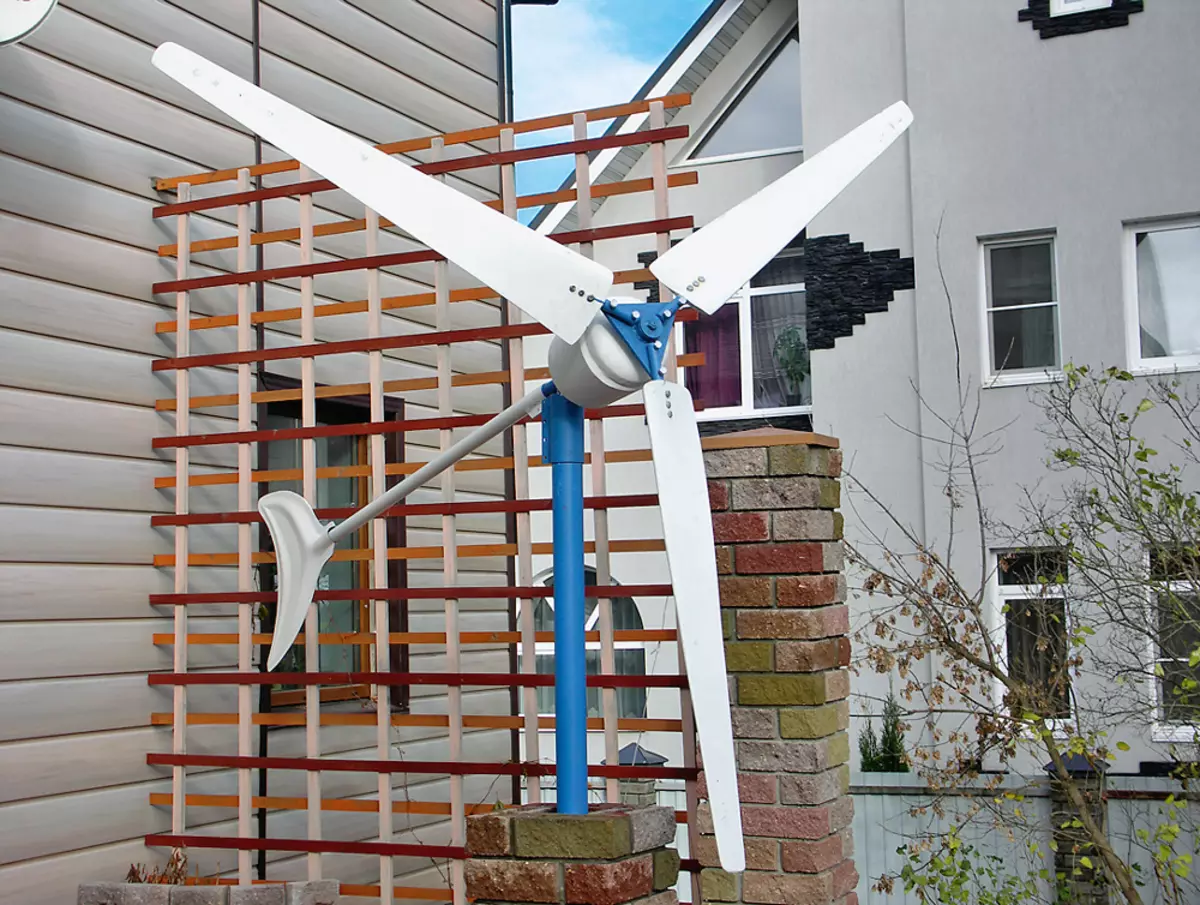
The wind-blander wind generator for a weak (from 2-3 m / s) wind. Photo: "Wind-power"
Wind generators are recommended to be installed on the highest area of the terrain. It is not necessary to save on the mast: at an altitude of 8-10 m, the strength of the wind increases by about 30%. The windmill when working may be noise, so it is better to install it no closer than 20 meters from the house. Fortunately, low-frequency noises affecting health and animal world, only the wind generators of very large capacities are produced - from 100 kW and higher. Therefore, light and low-power models of wind generators are sometimes installed on the roofs of buildings, and for such cases it is desirable to use damping linings.
Wind generators have particularly well established themselves on the northern Russian lands (in the indoor and plague), where, as a rule, strongly strong average annual winds blow (above 7 m / s).
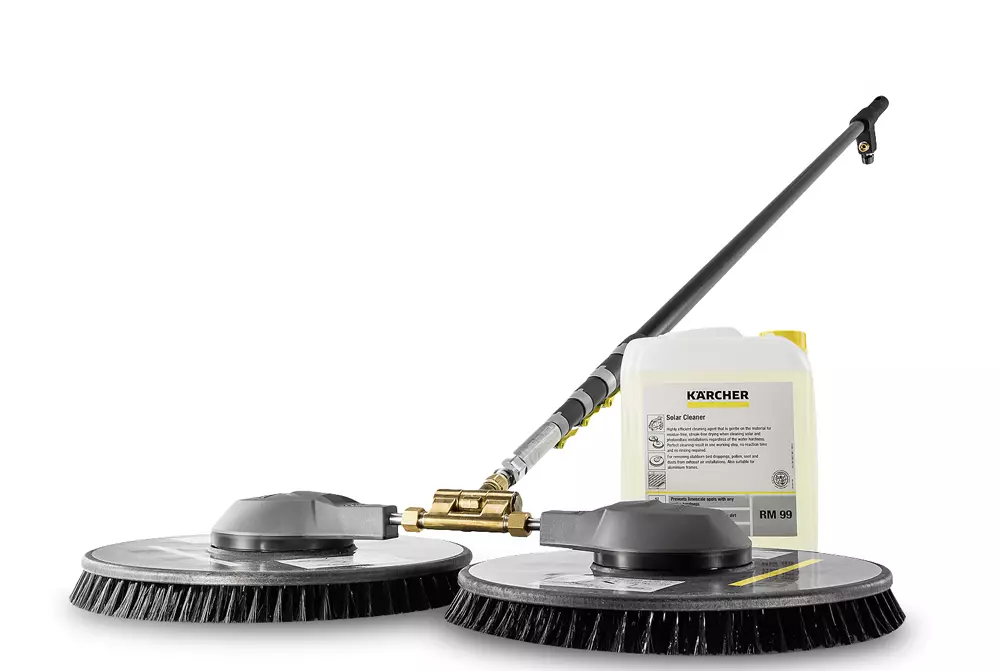
Kärcher Isolar system for cleaning photo galvanic energy installations. Cleaning a strongly contaminated solar battery increases its energy estimation by about 20%. Photo: Kärcher.
Optional equipment
In addition to current generators (wind generator or solar battery) you will need:
- Inverter - converts a direct current produced by a solar panel or battery, in an alternating current with a capacity of 220 V.
- Rechargeable batteries (AKB). They accumulates the supply of electricity in case of peak consumption or for the situation when the generator does not produce a current (for example, solar panels at night).
- Charge controllers - devices responsible for the direction of electricity flows generated by the generator. Without them, the generator will have to manually disconnect from the battery for each night and at the end of each charge. In addition, controllers increase the efficiency of the generator to 30-50%.
- Fastening the generator. In the case of the wind generator, it is a maximum height of 8-10 m. For solar panels, it is brackets for installation on the roof or separate designs.
As practice shows, the equipment kit will have to pay approximately as much as for the generator.
